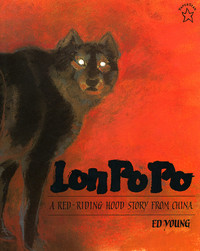Title: Good Dog, Carl
Author and Illustrator: Alexandra Day
ISBN: 9780689807480
Publisher: Little Simon
Genre: Wordless Picture Book
Guided Reading Level: Ages 3-8
A wordless picture book since 1985
A wordless picture book since 1985
*I was first introduced to this book while student teaching and it has been a favorite of mine ever since!
Alexandra Day is the pseudonym of Sandra Louise Woodward Darling. For Sandra, art was a part of her everyday life growing up. There were many artists in her family. She learned of her own love for art at a young age, while watching her father’s drawings come to life. It is of no wonder that Sandra would create a picture book where the illustrations tell the story. Sandra illustrated Good Dog, Carl, which was published in 1985. She used her Rottweiler named Toby to paint Carl. Her own granddaughter Madeleine was the inspiration for the baby in the story. The characters are not given names in this picture book, but it is understood that the three characters in the story are Carl, Madeleine and Big Mistress. While Big Mistress runs errands, Carl watches over Madeleine. The two have a ball of a time. When their fun comes to an end, Carl gets Madeleine all washed up and ready for bed. The task is completed just in time for Big Mistress to return to a peaceful and quiet home.
I know that the story lends itself to many fantastical ideas, but this is partially why it has become a favorite of mine. Alexandra Day created a story as imaginative and creative as those who are intended to view this lovely picture book. Lesson upon lesson can be taught through this book; reality verses fantasy (dog safety and dogs are not babysitters); sequencing; how important detailed illustrations are in telling a story (writer’s workshop). This picture book can be used prior to reading a picture book with a higher level of reading difficulty to facilitate the idea that since the illustrations tell a story that the illustrations can be used to assist in decoding unfamiliar words. This picture book is nearly wordless, but it takes you on an adventure that is absolutely hysterical to the little eyes that view its’ wonderful watercolor illustrations.
I chose this wordless picture book because I have found it to be very useful in a classroom with emergent readers and new writers/illustrators. It is nice to watch the children laugh and tell the story in their own words. I find it amusing myself! This story came out of a daydream that Sandra once had. I wonder how many mothers closed their eyes for a few seconds and imagined someone else taking care of everything around the house while they attended to adult-things. I have one final comment before this entry comes to a close. If you choose to bring this picture book into the classroom you might want to have a reminder talk with your class about the appropriate noise level for your classroom because Good Dog, Carl is sure to unleash a barrel of laughs out of the little ones!

